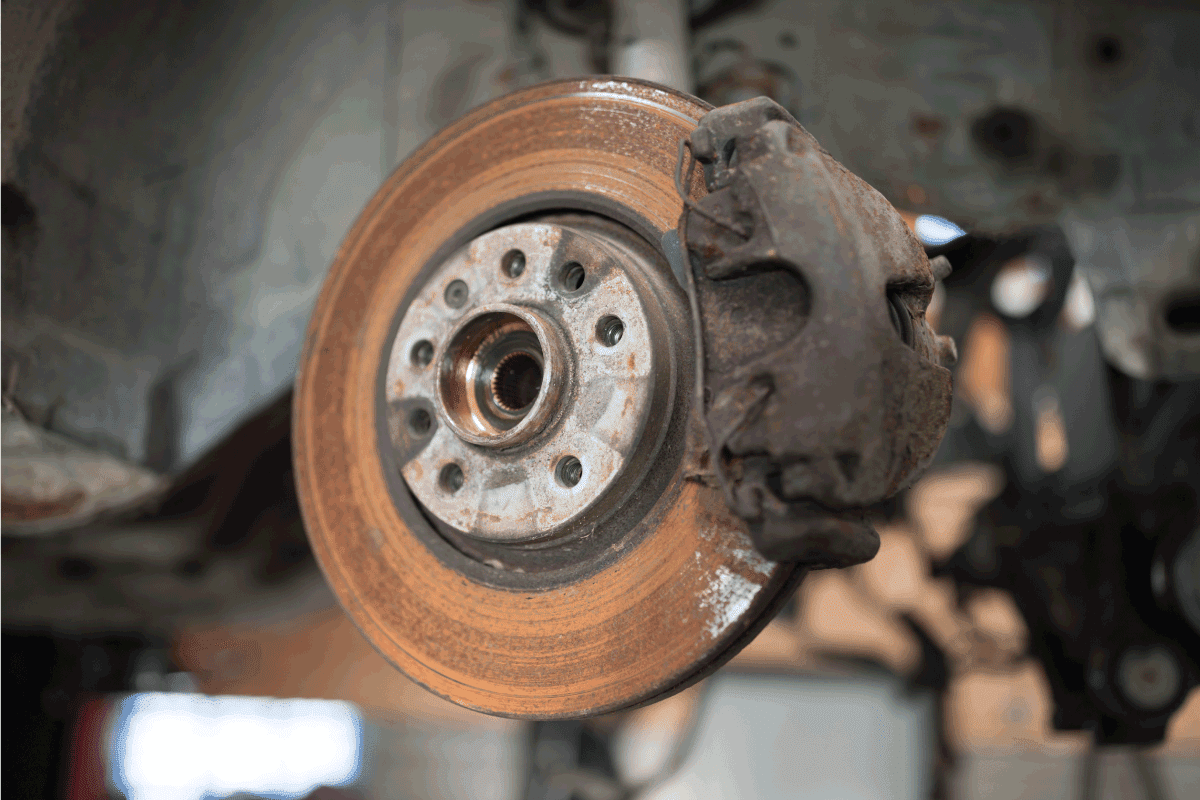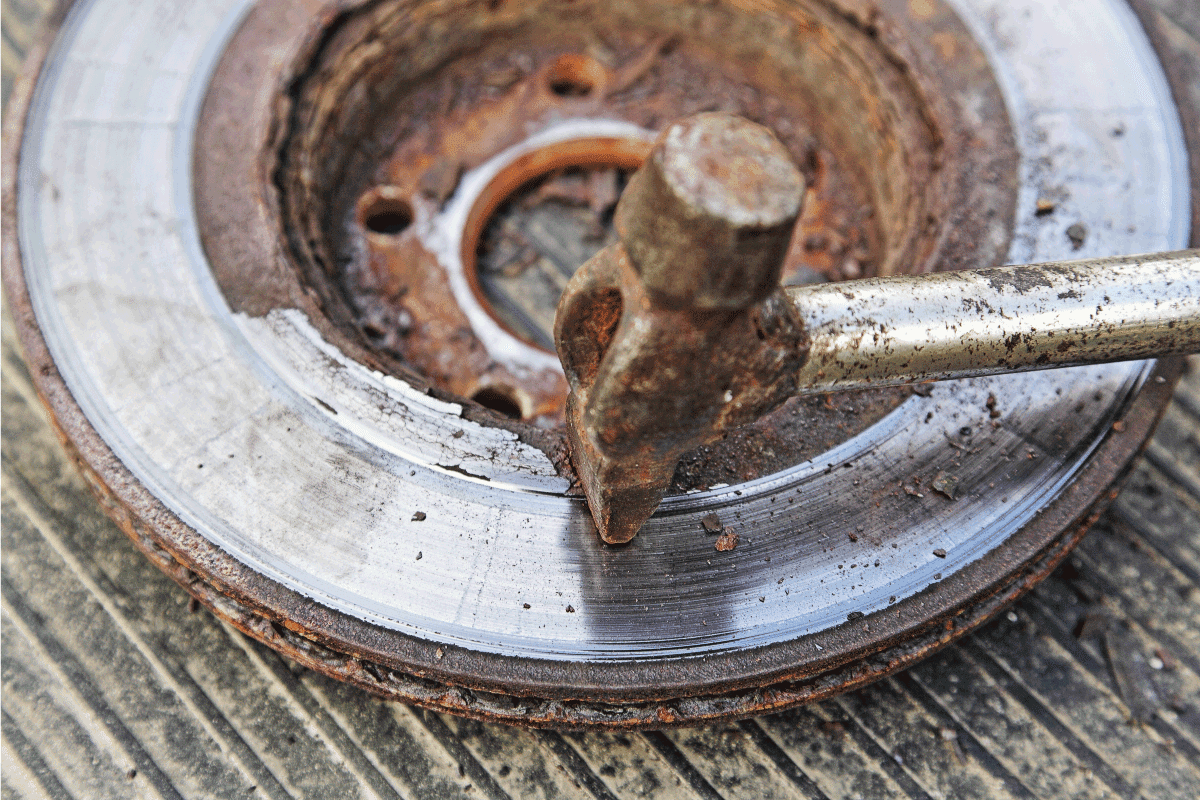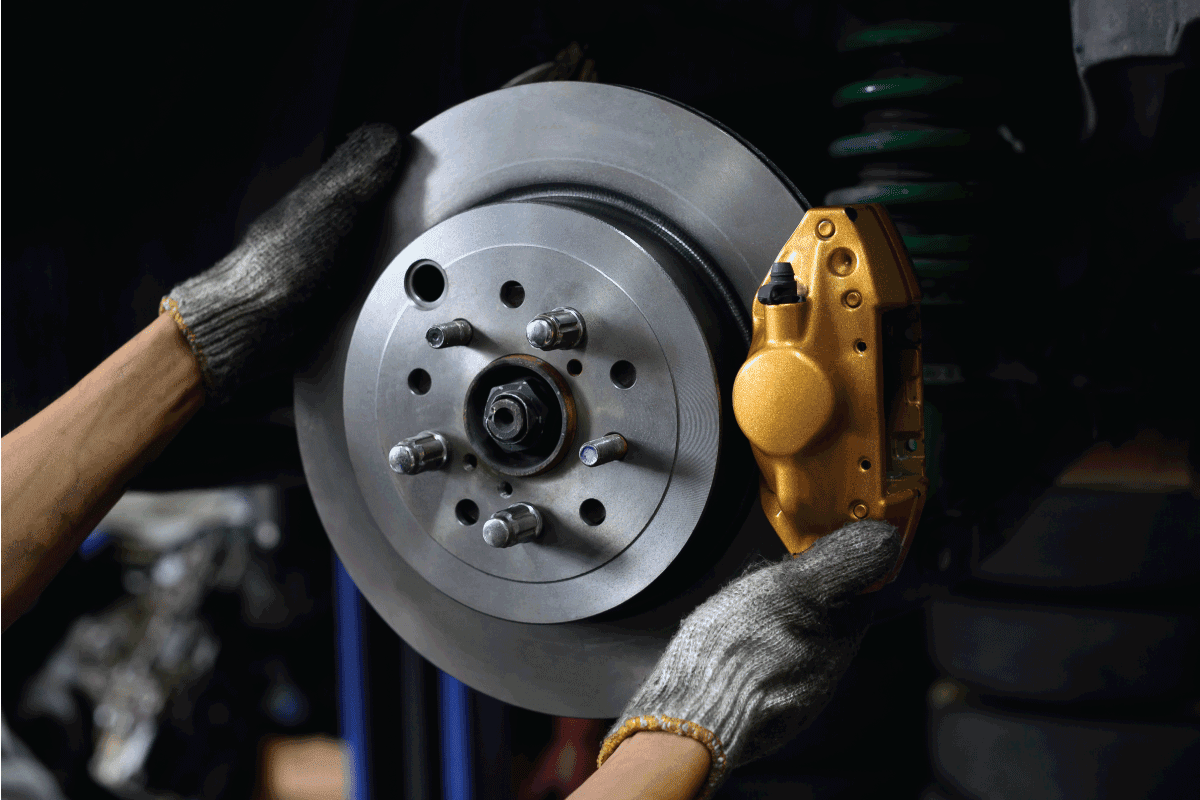You notice that your brake rotors have rust buildup. Now, you're wondering if it's safe to drive with this issue. We are curious about this scenario, too, so we researched the answer for you, and here's what we found.
It should still be reasonably safe to drive your vehicle if only a relatively small amount of rust is on your brake rotors. But failure to remedy this problem at its early stages may increase hazards over time.
Significant rust buildup on your rotors can be dangerous to you, your passengers, and nearby people.
So you should keep reading as we talk about rusted rotors in greater detail. We’ll also discuss some ways that may help solve the rust issue on your vehicle’s rotors.
How Do You Tell If You’re Driving With Rusted Rotors?
Aside from visible signs of rust on rotors, you may experience other symptoms that might be tell-tale signs that this problem exists in your vehicle. Some of the possible signs are:

Unknown Sounds
Noisy brakes, particularly if they squeal, often indicate that your vehicle has a rotor problem. It usually comes with a high-pitched shrill, similar to the sound of scratching nails on a chalkboard. If your brakes produce a loud scraping sound, it might mean that the rust buildup is already severe.
Poor Brake Performance
If your brakes are relatively new, their performance should allow the vehicle to stop when you apply the appropriate force to the brake pedal. But it might take longer than usual for the brakes to stop your car if the rotors are rusty.
Brake Failure
Take note that the rotors work with the brake pads to help stop your vehicle. So a rotor with significant rust might break, preventing your vehicle’s brake system to work as expected. This event leads to a complete brake failure, which may also lead to accidents and injuries to people in and around your car.
What Causes Brake Rotors To Rust?
Rotors may rust when their metal materials mix with moist air. The combination of oxygen, water, and metal creates corrosion, which leads to the orange-brown color forming on those brake components.
Take note that iron and steel are the two fairly common victims of rust formation. Unfortunately, many brake rotors have these types of metals used in their construction.
So driving through wet and muddy terrain frequently may cause the rotors to corrode sooner than later. Also, the rust buildup might be quicker for some vehicles than others if the frequency of driving over those kinds of terrain is quite regular.
Can You Repair Rusty Rotors?
It might be possible to repair your rusty rotors if the corrosion is still reasonably light. In particular, you may attempt to remove the buildup if the rotors don’t have cracks, severe grooves, or hard spots caused by the rust. If these signs exist, it might be best to replace them instead of trying repairs.

How Do You Remove Rust From Brake Rotors?
Rust removal jobs for brake rotors are usually DIY-friendly jobs, especially if the corrosion is still reasonably light. If so, you can proceed with this operation by following these general steps:
What You’ll Need
- Floor jack
- Jack stands
- Wheel chocks
- Pan or tray
- Lug wrench
- Brake cleaner
- Cloth, rag, or towel
- Steel wool
Step-By-Step Guide
- Turn off the car’s engine and engage its parking or hand brake.
- Raise the area of the vehicle with the rusty brake rotor with the floor jack.
- Install jack stands under the chassis to help support the vehicle if the floor jack fails.
- Chock the grounded wheels to prevent them from moving.
- Loosen the lug nuts on the wheel next to the rusty rotor. Remove the wheel assembly afterward.
- Place a pan or tray underneath the rusty rotor.
- Apply brake cleaner with a rust-removing formula to the rotors.
- Allow the rotor to dry then wipe the excess cleaner and rust with a clean cloth, rag, or towel.
- Apply extra amounts of brake cleaner if necessary.
- Use steel wool to get rid of hard-to-remove rust.
- Reassemble the removed parts and lower the vehicle to the ground.
Check out this brake parts cleaner and rust remover on Amazon.
Note: You may need to remove the brake calipers if you find it difficult to gain access to the rotors. You can watch the video below to help you with this particular task:

How To Replace Rusted Brake Rotors?
Replacing rusty brake rotors might be the best option if the rust buildup is serious. Bear in mind that replacing rotors is still a relatively DIY-friendly job. However, you still need to follow the steps carefully. That way, the risks of making costly mistakes should be considerably low.
![How To Replace Rusted Brake Rotors. Is It Safe To Drive With Rusted Rotors [Here's What You Need To Know!]](https://vehq.com/wp-content/uploads/2022/11/How-To-Replace-Rusted-Brake-Rotors.-Is-It-Safe-To-Drive-With-Rusted-Rotors-Heres-What-You-Need-To-Know.png)
Start this replacement operation by ensuring your workspace is safe. Some of the preventive measures you can apply are:
- Remove all pieces of jewelry. Rings, bracelets, and other baubles can snag into some parts, which may result in accidents and injuries.
- Wear proper clothes. Don gloves, safety goggles, and long-sleeved clothing to prevent possible irritation to the skin and eyes.
- Only work in a well-ventilated area. Protect yourself from inhaling fumes that might trigger allergy attacks by opening doors and windows.
- Stabilize the car. Use jack stands and wheel chocks to prevent the vehicle from moving while you’re working on it.
- Request help. Ask for assistance from another individual (e.g., a friend or family member) to make this replacement job easier to deal with than expected.
- Disengage the engine. A running engine can make certain parts move, which can make replacing the brake rotors more difficult and dangerous than intended.
Take note that it might be ideal to replace the pads along with the rotors to ensure the brake system works properly. So continue this procedure by following these steps after ensuring that the preparations are complete:
What You’ll Need
- Socket wrench set
- Breaker bar
- Torque wrench
- Metal wire brush
- Brake piston compressor
- Hammer
- Flathead screwdriver
- Replacement brake pads
- Replacement brake rotors
Step-By-Step Guide
- With the vehicle raised and stable, remove the wheel next to the rusty brake rotors.
- Open the driver-side door and turn the steering wheel to expose the bolts securing the brake pad and rotor.
- Break the bolts loose with the breaker bar. Loosen the fasteners further with the appropriate socket wrench.
- Pull out the bolts and place them in a safe yet fairly obvious spot.
- Pry open the caliper with your hands or with the help of the flathead screwdriver.
- Remove the old brake pads.
- Lift the caliper and slide it out of place to remove it from its mount. Don't disconnect the caliper.
- Avoid pressure on the brake line by placing the caliper out of the way but in a nearby location.
- Remove the bolts securing the caliper bracket. Take out the caliper afterward.
- Whack the hammer on the old rotor to break it loose. Pull the rusty rotor out of its mount once it’s loose enough.
- Remove the rust from the rotor hub’s surface with the metal wire brush.
- Place the new rotor in the same location as the old unit.
- Reassemble the other parts, but make sure to replace the brake pads as well.
- With the other components reinstalled, remove the floor jack, jack stands, and wheel chocks.
- Take your vehicle for a test drive to check the performance of its new brake rotors and pads.
Check out these replacement brake rotors on Amazon.
Note: Make sure to replace the brake pads and rotors in pairs. That means that you should also change the other side of the replaced brake pad and rotor, regardless of the condition of these parts on the opposite side of the vehicle.
You can also watch this video if you need a visual guide to this procedure:
How Much Does It Cost To Refurbish Rotors?
Expect to pay around $30 to $200 to have your rotors refurbished or repaired. Take note that the expenses may increase if you need to have multiple rotors fixed.
![Brand new brake discs for garage cars. Auto mechanic. Is It Safe To Drive With Rusted Rotors [Here's What You Need To Know!]](https://vehq.com/wp-content/uploads/2022/11/Brand-new-brake-discs-for-garage-cars.-Auto-mechanic.-Is-It-Safe-To-Drive-With-Rusted-Rotors-Heres-What-You-Need-To-Know.png)
Final Thoughts
Remember to check the severity of the corrosion on your rotors before driving your car. Don't proceed with driving your vehicle if the rust buildup in the rotors is quite severe. Remove the rust or replace the rotors to gain peace of mind while driving.
If you’re looking for answers to other vehicle-related concerns, check out these other great reads:
Is It Safe To Drive With Reduced Engine Power? [Here’s What You Need To Know!]


